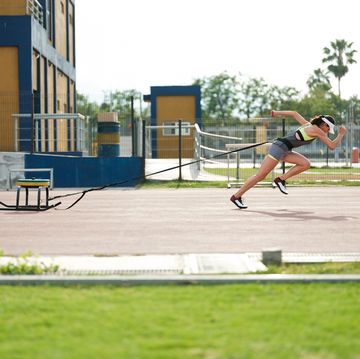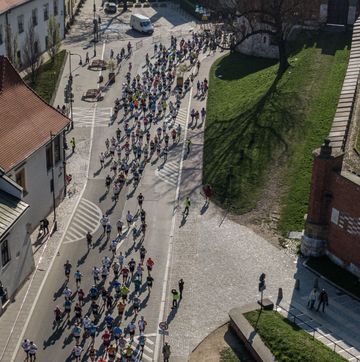Austen Oser pulls away from the crowd.
Sometimes a coach — even an inexperienced coach — can come in to a prep athletic program and, in a matter of a few years, transform it into a state or national powerhouse. In other scenarios, it’s a much more gradual process.
When Matt Rexus took over the boys cross country team at Kamiakin High School in Kennewick, Wash., 25 years ago at the request of a desperate athletic director, he was a former college basketball player who had no experience with competitive distance running. That’s not to say, however, that he was not cut out for the job.
“The funny part is that my teammates [when I was playing basketball] would sometimes wonder why my favorite conditioning workouts were the long runs our coach would sometimes make us do,” Rexus says. “[The AD] knew I hadn’t done cross country before but wondered if I would be willing to try it for at least one year. Well, here I am 25 years later.”
And, he says, loving it more each year. Thanks to his embrace of the sport and a lot of other helpful coaches, Rexus built the Kamiakin boys into a good district team and a state contender. But in the past two years the program has really exploded. In 2011, led by state individual champion Anthoney Armstrong — a national elite who also won the Nike BorderClash and Nike Cross Nationals (NXN) Northwest Regional — the Braves were a best-ever third at their state class 3A meet.
Armstrong and three other seniors completed their eligibility, so a downturn could have seemed inevitable in 2012. But an extremely motivated returning group improved to second place at state this past fall, then scored a stunning second at NXN Northwest — both times behind only national power North Central of Spokane. At NXN Finals in Portland, Ore., on December 1, Kamiakin was one of the biggest surprises, finishing seventh after coming in ranked 17th. During this magic season, the team even overcame losing standout junior Keegan McCormick to appendicitis.
“I told the returning kids right after the [2011] state meet that nobody thought they would be as good this year, because of the people we were losing,” Rexus says. “But I also told them that if they worked hard and focused on making progress, that we could surprise everyone. The older boys took responsibility for showing the younger kids what needed to get done.”
Matt Rexus, coach of the Kamiakin High School boys cross country team
“We thought we had a lot of potential,” says senior Austin Oser, generally the team’s best runner and 33rd at NXN Finals. “We were good last year, but in all honesty, we were soft.” That changed, he added, because the returning runners worked extra hard to forge close friendships and an attitude that no one wanted to let anyone else down. He points to the SunDodger Invitational as one example. Oser, running with a fever, had an off day, but his teammates stepped up and Kamiakin won the meet.
Kamiakin’s success under Rexus has been the result of both gradual development and specific training advances in the past 3 or 4 years. “I learned a great deal from the [Kamiakin] girls coach, Colleen Spandoni, who herself had run for Joel Wingard at one of Washington’s state powers at Gig Harbor,” Rexus says. “And I’ve had close contacts with many coaches, including Pat Tyson, who is now at Gonzaga University. It has really been picking pieces from as many good programs as possible, over a long period of time, and the kids believing that I know what I am talking about.”
Rexus also cites the positive effects of having taken much of the team to the Flathead Lake Distance Running Camp in Montana since 2000. Others attend the Tollgate Distance Running Camp in Northeast Oregon.
For his team that has grown in the past four years from 25 boys to 50, Rexus has increased the average early- to mid-season mileage (from 45 to 55 miles per week for experienced upperclassmen) and extended the duration of select speed workouts (from 8 x 400m in 70 seconds to 12 x 400m, for example). He has also added a core workout five times per week. It varies on different days between 10 and 20 minutes and “is a work in progress, as we’re constantly looking for new things to help get us to the next level,” he says.
A long surge workout along the Columbia River near the school in southeast Washington was key this past fall, Rexus says. It included 8 race-pace segments starting at five minutes, working down to one, then back up to three, with a two-minute jogging interval in between. “The first part is mentally challenging,” he says. “It gets shorter and shorter, [then] the hard part is increasing the length of time when you are already tired. It was a great mental toughness workout.”
Armstrong, who is now at Oklahoma State, is not surprised Coach Rexus took the team to seventh at NXN. “He is to the point where he can get any group of guys and send them to state,” Armstrong says. “I told the team [before the season] that if they run together and run smart they could get a shot at nationals. I could tell in all of their eyes they wanted it.”












